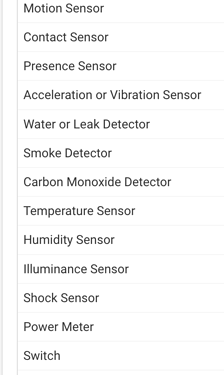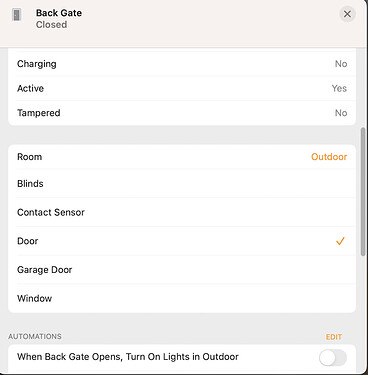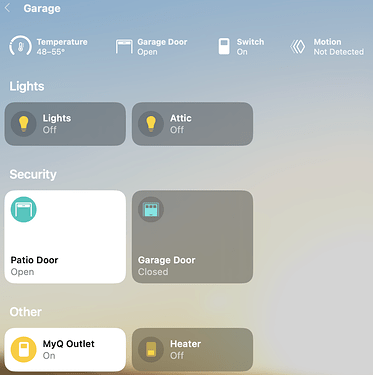How about letting the end user decide? I have sensors that I use as motion sensors on dashboards, and as both motion and lux sensors in automations. The built-in Dashboard app permits the same device to be represented multiple times with different capabilities/attributes for each tile.
Didn't realize it already existed .... but I'm not surprised it isn't used in most of the built-in drivers I use.
Why would it be? It's a switch at the end of the day (and in the morning too).
I’m finding the conflation of driver capabilities and dashboard icons to be confusing.
Isn’t it device attributes that determine which dashboard tile templates can be used with a given device? Asking as a non-developer with a limited understanding of this stuff overall.
Maybe I’m not understanding how Joe Page’s android mobile app interface for creating dashboards differs from the built-in dashboards. Which is probably the Android app the OP is referring to, but that’s not actually clear either.
Ultimately, yes. But attributes are a function of capability. Conflation of capability and attribute is merely the convenience of how you talk about them. For example, RM uses the word "capability" for pulling up possible devices for a trigger or condition, when arguably it is attribute that is being chosen. And, ultimately there is a single attribute used to capture what that device does. For most capabilities (not all), there is a dominant attribute. But, consider 'thermostat'. It has so many attributes that RM has to list them separately:

Then, in contrast to that, Basic Rule doesn't mention either capability or attribute, just some concept of device type:
I would think that a good Dashboard design is more like Basic Rule, since that's how people generally think about devices. The fact that a given device might be a Motion Sensor and a Humidity Sensor at the same time shouldn't really matter -- I know what I want to see about it in my dashboard.
Thanks for clarifying. I could assume there was some relationship between capabilities and attributes but wasn’t certain.
Each capability has certain defined attributes associated with it. All are documented here:
It seems like this is mostly a UI issue and different systems use different methods. Hubitat is probably the most basic. And all have opportunities for evolution improvement. Should Hubitat invest in making these kinds of changes? IMO probably only if it would be part of a larger general UI investment.
I think the easiest way of understanding some of these issues is to show examples.
Before showing examples it makes sense to break down devices that can be controlled and sensors. Within controls there are devices that are essentially the same - e.g. switches, relays, outlets. Within sensors there are a couple types: a) ones that relate to entities in a similar manner, e.g. contact, door, window, and b) sensor devices with multiple capabilities - sensors with temp, humidity, lux, motion, etc.
Alexa lets users designate controlled outlets as either lights or plugs. The devices get put into separate categories. So when you say turn off the lights the plugs are ignored. And if you turn the room off both lights and plugs are turned off. Apple Home has a similar choice when devices are shared as switches:
Apple Home lets the user choose the use of a contact sensor. Here is mine for my back gate contact sensor:
The other multi-sensors generally get added as different devices. So in Apple Home my motion/temp sensor is shown as 2 devices. I think that makes sense. There might be a case to combine attributes, similar to how a thermostat device does.
Another thing that seems to work well in Apple Home is that sensors are all shown in a different manner (smaller icon/text, status at the top of the page) than are controllable devices. Here is the status of my garage with controlled devices and sensors:
This topic has wandered all over the ballpark, with no clear subject. We are closing it now, and encourage any of you to open new topics that might be of interest and have good purpose.





